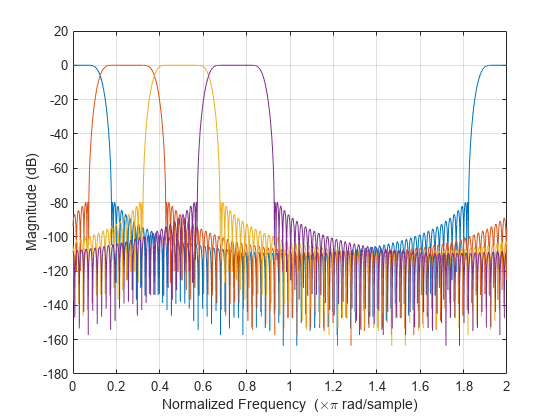getFilters
Return matrix of channelizer FIR filters
Description
B = getFilters(obj)B of filter coefficients corresponding to each
filter in the dsp.Channelizer
System object™ filter bank. Each row contains the coefficients for the corresponding
bandpass filter. The channelizer does not actually use all these filters in the
implementation. It only uses the prototype lowpass filter (the first row of matrix
B) and an FFT to implement the filter bank. The combination
of polyphase implementation of the prototype lowpass and the FFT effectively
implements all the filters in B, but does so in a very
efficient manner.
Examples
Input Arguments
Output Arguments
Version History
Introduced in R2017b
